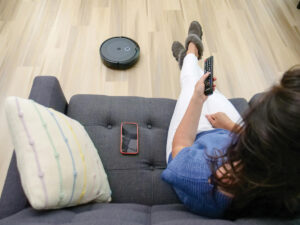Typically, this column focuses on technology with only minor deviations here and there to discuss other similar topics. But, under all of that technology lies a driving force that provides the power behind what we have come to know as the modern age. I’m writing, of course, about electricity. And, in an effort to better understand electricity, let’s start with some basic information about just how that electricity gets to your house.
You might be surprised to know it’s really all about magnets.
For the most part, electric current is generated by moving a loop of wire, or disc of copper, between the poles of a magnet. By moving that wire in such a way, the current begins to flow and we can “send” it out across large transmission lines. Once those lines reach a local system’s substation, then the current is “stepped down” using transformers.
So what’s inside the transformers? You guessed it: more magnets and more wire, among other things. Of course, that voltage is still too high for most uses so when the power gets closer to your actual home, it’s stepped down once more. Have you seen the little gray cylinder shaped object hanging from the poles that bring wire into your house? Those are also transformers. They’re just smaller versions with more magnets and more wires inside.
In order to bring electric power into our homes, we need many different sizes and quantities of magnets, wire, poles and engineering know-how. Now, if you happen to be an engineer and you’re reading this, then you know I have simplified this explanation. But you can feel free to point out some of the details on the website in the comments section if you like.
So our homes and businesses are powered up, now the rest is under our control, right? Unfortunately, these days there are a myriad of devices we all just take for granted that we assume are powered off when they are actually still “sipping” energy. They are called parasitic loads, phantom loads or energy vampires. Many of us have an “always-on” expectation for our electric service and the technology we plug in. We leave devices permanently connected to power, even when they’re not in use. That’s only gotten more prevalent with time. For instance, do you unplug your television or computer when you’re done using them? Probably not. If not, then both of those devices are still using power, even when you’re away. These new vampire loads are sneaky. You turned the TV off right? Yes you did, but in the dark it’s silently sipping away on a small trickle of electricity. That trickle is adding up and studies have shown the average home has 5 to 8 percent new load from this new always-on technology.
So, why are devices always on? It’s about convenience. Who wants to have to reset the clock every time you turn something back on. We want our computer and television to remember our preferences in order to save us time. Of course, these devices also have batteries in them, but those batteries wouldn’t last very long if they were the sole provider of power for that device’s memory.
So how do you slay these vampires conveniently? Try plugging computers, monitors, printers, speakers, DVDs, TVs, video game players and cell phone chargers into surge protected power strips. You can virtually unplug all these devices by turning off the power strip.
Now, there are even smart power strips that are color-coded and designed to reduce use by shutting down power to devices that go into standby mode. Most smart strips have three outlet colors. Blue serves as a control plug which is great for something like a TV or computer. Red outlets stay on, which makes them great for those devices needing constant power like a satellite box. The others are often green or neutral in color and are sensitive to current flowing through the blue outlet. Basically, if you turn off the TV plugged into the blue outlet, it will also cut the power to the green outlets.
After you install all your new power strips the next step is getting your kids to turn off their electronics and chargers via the power strip. Sorry, I don’t have a technology answer for training kids on turning things off. Let me know if you do. See you next month.









